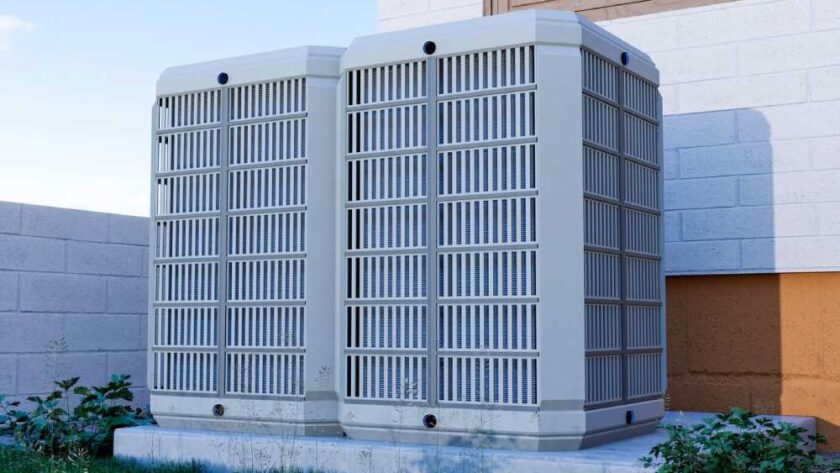Split heat pumps are more than just a passing trend in the HVAC world; they represent the future of home temperature management. The need for split heat pumps will only grow as people become more conscious of environmental problems and the need to save energy.
Unlike conventional heating and cooling systems that often rely on fossil fuels, split heat pumps use electricity to transfer heat, offering a more environmentally friendly option. This dual functionality differentiates them from other systems, allowing homeowners to enjoy benefits year-round.
In our quest for sustainable living, homeowners across the globe are gravitating towards efficient alternatives for heating and cooling their homes. Among the leading contenders is the split heat pump, a system renowned for combining comfort with energy savings. These innovative systems are revolutionizing modern homes’ climate control management, delivering economic advantages and contributing to a healthier environment.
For those new to the concept, split heat pumps are a testament to engineering excellence. They provide tailored temperature control without the cumbersome ductwork associated with traditional systems. Their popularity is skyrocketing due to their eco-friendly nature and the promise of significant reductions in energy expenditures, making them an ideal solution for anyone aiming to minimize their environmental footprint while enjoying a comfortable atmosphere.
Contents
The Mechanics of Split Heat Pumps
A sophisticated mechanism designed to move thermal energy is at the heart of a split heat pump system. Comprising an indoor and an outdoor unit, these systems leverage the principles of refrigeration to transfer heat.
In essence, split heat pumps extract heat from external environments, even in colder weather, and bring it indoors during the colder months. The process reverses in the summer, expelling indoor heat to provide cooling. Understanding how heat transfer works in split systems underscores its efficiency and reliability, making it an appealing choice for modern homes.
Benefits of Split Heat Pumps for Homeowners
Homeowners who opt for split heat pumps immediately notice several advantageous features. First is the quiet operation. Unlike traditional systems that can disrupt the serenity of a home with their noise, split heat pumps operate with minimal sound, providing peace. Their compact, unobtrusive design is another advantage, making them ideal for urban settings where space is premium.
However, the highlight for many is the ability to control temperatures independently across different zones of the house. This flexibility can lead to more personalized comfort and further reduce energy costs, allowing homeowners to heat or cool only the spaces they use.
Energy Efficiency and Environmental Impact
The push for sustainability has put split heat pumps in the spotlight due to their remarkable energy efficiency. These systems reduce demand on the electricity grid, translating to lower utility bills for homeowners. Using renewable energy also helps decrease household carbon emissions, aligning with various global efforts to mitigate the effects of climate change.
Detailed studies, such as insights from the impact of energy-efficient systems on climate change, further elucidate how such advancements are crucial in the fight against global warming, presenting a win-win for ecological and economic goals.
Installation and Maintenance Tips
While split heat pumps offer a streamlined design, their installation requires precision and expertise. Hence, professional installation is often recommended to ensure that the system operates at peak efficiency.
Regular maintenance is equally important to keep the system in top working condition. Simple maintenance steps include regular filter cleaning or replacement, checking for refrigerant leaks, and scheduling annual inspections by certified professionals. Such practices enhance the system’s performance and prolong its lifespan, ensuring long-term comfort and savings.
Popular Myths and Misconceptions
Despite their growing popularity, split heat pumps are often subject to misconceptions. A common myth is that they are ineffective in extreme temperatures. Modern split heat pumps, however, are specifically designed to perform efficiently even when outdoor temperatures dip or soar.
Another misconception is the idea that they are costly to maintain. These systems are typically reliable with routine checks and care and require minimal maintenance. To completely understand the practical and financial advantages of split heat pumps, it is imperative to dispel these myths.
Future Trends in Split Heat Pump Technology
The future of split heat pumps is bright and filled with potential innovations. Advancements in technology are paving the way for more intelligent systems capable of integrating with smart home setups to deliver even greater efficiency and user convenience.
Systems that interact with renewable energy sources, like solar electricity, are becoming increasingly common to improve their environmental credentials further. These trends indicate that split heat pumps will continue to evolve, offering even more refined solutions for modern living demands.
Tips for Choosing the Right System for Your Home
Selecting a suitable split heat pump system involves considering several key factors. Homeowners should evaluate their specific climate conditions and the size and layout of their homes to determine the most effective system.
Additionally, factoring in lifestyle preferences can influence decisions, as specific systems offer advanced features that may align better with particular needs. It is strongly advised to speak with HVAC specialists to obtain advice and insights specific to each case, guaranteeing a healthy balance between energy conservation, environmental responsibility, and home comfort.




